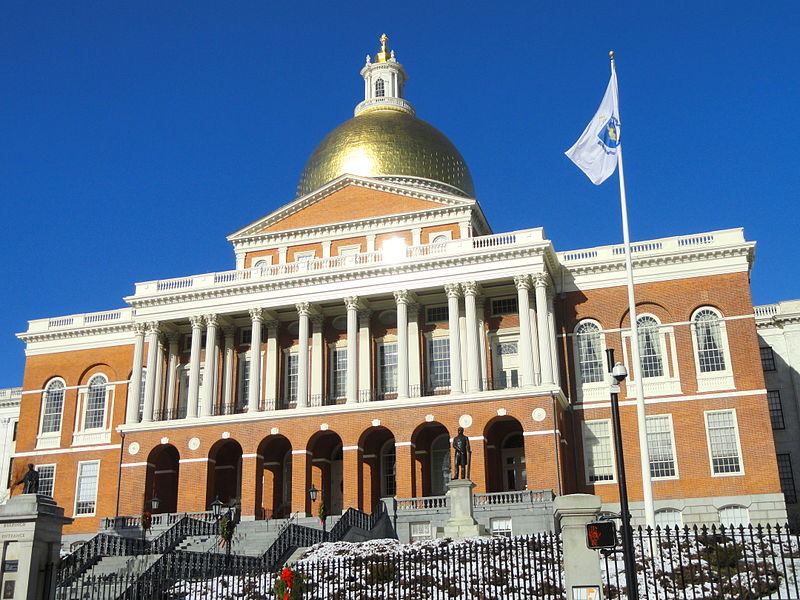Party balloons and a jazz ensemble livened up the City Hall lobby for a birthday party marking the half-century mark for one of Boston’s most polarizing architectural statements.
Architect Michael McKinnell was part of the team that won a 1962 design competition for a new city hall, as urban renewal replaced the Scollay Square neighborhood with the Brutalist-style structure and a vast outdoor plaza. A half-century after the project’s completion, McKinnell said there’s still more work to be done.
1960s-era city councilors, he recalled, criticized the generous common areas as a waste of space. They were aghast when he suggested they would be ideal locations for student sit-ins. He urged this generation’s officials to think more creatively about ways to activate the building’s interior.
“We come here for our marriage licenses,” McKinnell said. “Why don’t we come here for our weddings?”
Mayor Marty Walsh spoke about the city’s ongoing efforts to make the property more welcoming to the public, ranging from summer beer gardens to winter carnivals filling parts of the otherwise desolate outdoor plaza.
“This plaza will bring people together, and it’s going to mean more than just a yearly victory parade,” Walsh said.
The contrast between City Hall’s complex concrete facade and many of Boston’s newest office towers and luxury high-rises hasn’t been lost on McKinnell, a partner at Kallmann McKinnell & Wood Architects of Roxbury. Asked for his opinion on the recent building boom, McKinnell hesitated.
“I don’t think I want to answer that question,” he said with a chuckle. “In the commercial world, architecture is made because of developers and also in spite of them. There are developers who really do have a vision and sense of responsibility to the city and the environment they are building in, and there are other developers who frankly don’t, for whom the bottom line is the only important thing.”








